The humble house cat has long been admired and valued for both companionship as well as their skills in hunting mice. They are one of the most popular pets on a global scale, with millions of cats residing in households all over the world. A staple of internet culture, there are over two million cat videos on Youtube alone that have been accessed billions of times. Cats are especially popular in Egypt, where they have been revered for many centuries, dating back to the Ancient Egyptian civilisation.
They are beloved in the Islamic world, for the Prophet Muhammad’s fondness for cats, and the saying popularly attributed to the prophet, “Love of cats is part of the faith”. Their prominence renders them the subject of many colloquial Arabic proverbs, where they can often carry negative connotations. Popular sayings include, ‘if the cat’s away, the mouse can play’, ‘like a cat, he eats and forgets’, and ‘we talked about the cat, he came hopping’.
The humble house cat has long been admired and valued for both companionship as well as its mice hunting skills. Let's read about its symbolic and cultural representation in Arabic art
In a similar sentiment, cats tend to appear in popular culture of the Arab region as a disciplinary metaphor. The most famous instance of this is perhaps the well-known kids’ song ‘Thahab al Laylo’ by Egyptian composer and singer Mohamed Fawzi, in which the protagonist gets scratched by the cat for not listening to his mother.
Cats have historically been portrayed in the visual arts by various cultures through the work of some of the most important art history movements. Leonardo da Vinci (Italian Renaissance artist and polymath) wrote, “the smallest feline is a masterpiece”, having illustrated a number of studies that confirm his appreciation for the species.
Cats have been depicted in some of the most important artworks by modern artists from the Arab world and wider region. The following selection of works span different artists, countries and historical periods, tracing a history of Arab art in cats.
Cats in Ancient Egypt
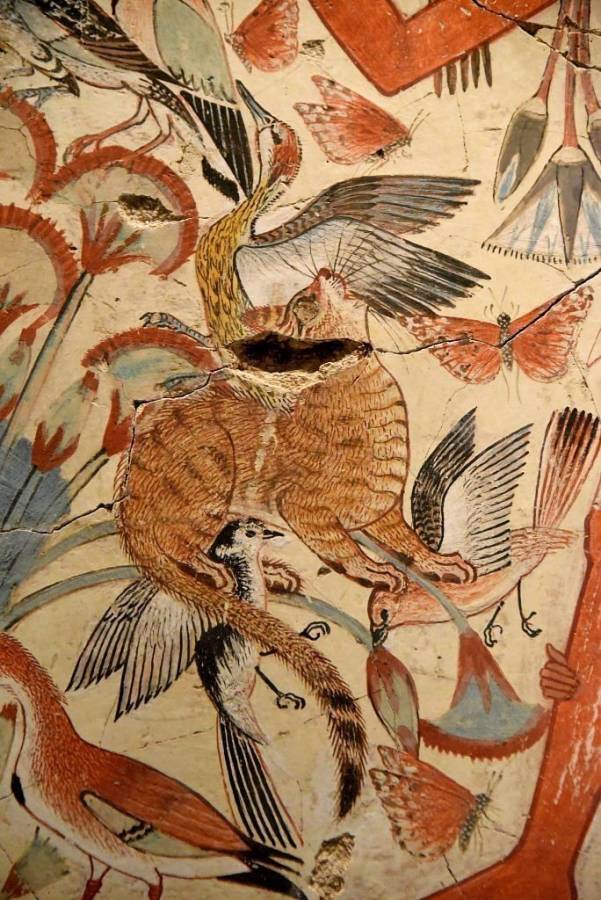
Cat Attacking Birds (from around 1550-1292 BC).
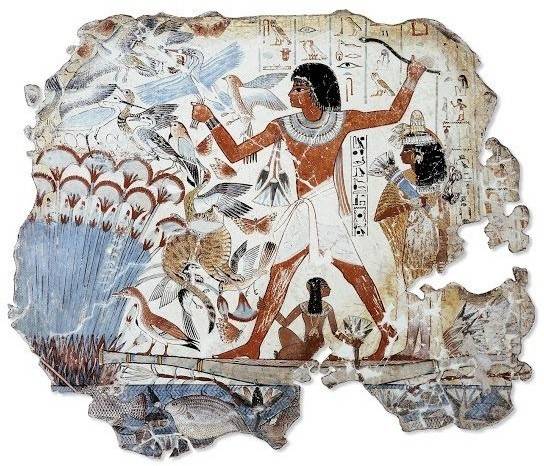
Tomb of Nebamun (from around 1550-1292 BC).
A fuzzy, ginger cat claws and bites between stems of papyrus to catch birds, in this detail from the wall-painting of the wealthy Egyptian Nebamun, hunting with his family. It appears to be a domesticated cat and would likely have been their pet, but its glittering gold eyes allude to a religious quality, the god Ra’s attack against their enemies.
In Ancient Egypt, cats were held in the highest regard and revered amongst the most significant deities. The god of the sun Ra, was also referred to as ‘Supreme Tomcat’, people worshipped the lion-headed goddess Sekhmet, and the cat-headed Bastet, and special priests were devoted to the cat’s services in her temple in the Nile Delta. In one of the most significant ancient texts, the ‘Book of the Dead’, the cat was also equated with the sun. Like people, cats were also mummified and lengthy ceremonious rituals were carried out to ensure a feline’s safe passage to the afterlife.
Cats in Islamic Culture
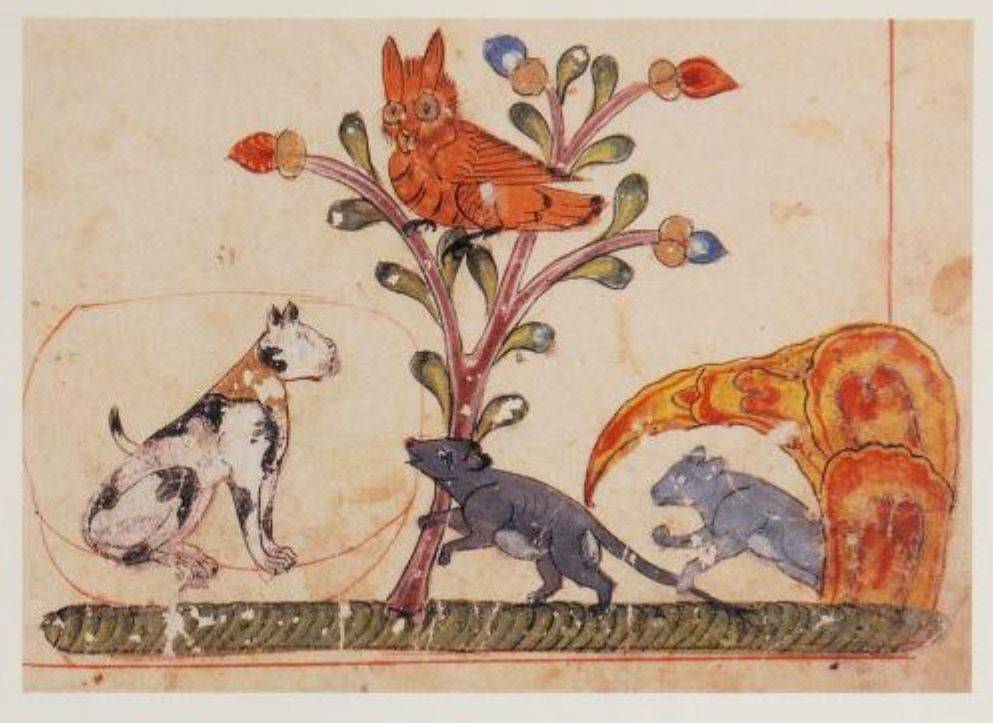
from a 14th century copy of the Arabic manuscript Kalila wa Dimna, Bodlieian Library, Oxford.
A big white cat patched with grey, wagging its tiny tail, ears alert, stands tall and strong, trapped in a thinly traced red net. A mouse attempts to gnaw the cat free, hoping to gain an ally against the weasel and the owl. This intricate painting comes from an Arabic version of one of the most popular books ever written, Kalila wa Dimna.
Because Prophet Mohammad was very fond of cats, he changed the negative way nomadic bedouins looked at them. It is even said that the prophet had to cut off his own sleeve to pray without disturbing his beloved, sleeping cat ‘Muizza‘
In the Arab world, cats used to be vilified. Nomadic bedouins had no use or liking for them and they often appeared negatively in their folklore. The ghoul, Arabic for the desert demon, took the form of a cat to scare camels. This changed with the advent of Islam, as the Prophet Muhammad was very fond of cats. There have been a number of friendly stories and sayings about cats attributed to him, and one of his closest companions was known as ‘Abu Hurayrah’ (father of a kitten), for his attachment to cats. The prophet is said to have cut off his own sleeve to pray without disturbing his beloved, sleeping cat Muizza.
As a result, cats were welcome in most mosques and Islamicised urban areas, their purrs sometimes likened to Sufi worship. Depictions of domesticated cats abound in Islamic manuscripts from all around the world.
The Guardians of the Night
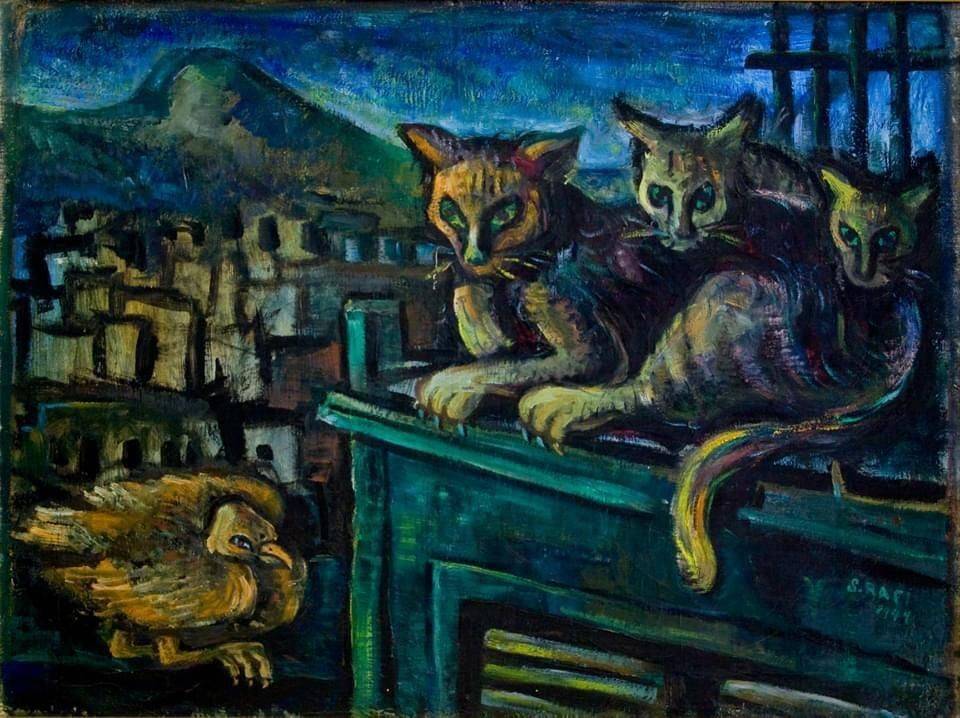
Samir Rafi, Les Gardiens de la Nuit (The Guardians of the Night), 1944
In this work, three sinister kitties sit alert, perched on a high city rooftop, claws at the ready, you can almost hear them hiss. They are joined by an equally menacing pigeon, as they glare intently at lookers-on.
Born in Cairo, Samir Rafi (1926-2004) was a painter, sculptor, arts educator and author. A leading surrealist artist, Rafi painted expressive depictions of human anxieties and the trials of life in Egypt. He depicted many animals in his work (cats show up more than once) as well as people and objects, portrayed in saturated colours and a distinctive style that was all his own. One of his earlier works, he painted The Guardians of the Night a year after he graduated from highschool (in 1943) and earned a gold medal from the Ministry of Public Instruction for being the best drawing student nation-wide. At the time, Rafi was one year into studying at the Decorative Arts department of the Egyptian School of Fine Arts, as the protege of Hussein Bicar. He also trained with artist and educator Hussein Youssef Amin and only a year after this painting, participated in an exhibition with the Art and Liberty group, a few months before his nineteenth birthday. Rafi left Egypt in 1945 to pursue his PhD in France, never to return. In 1946, he co-founded the Contemporary Art Group, of which he was a prominent member.
The White Cat
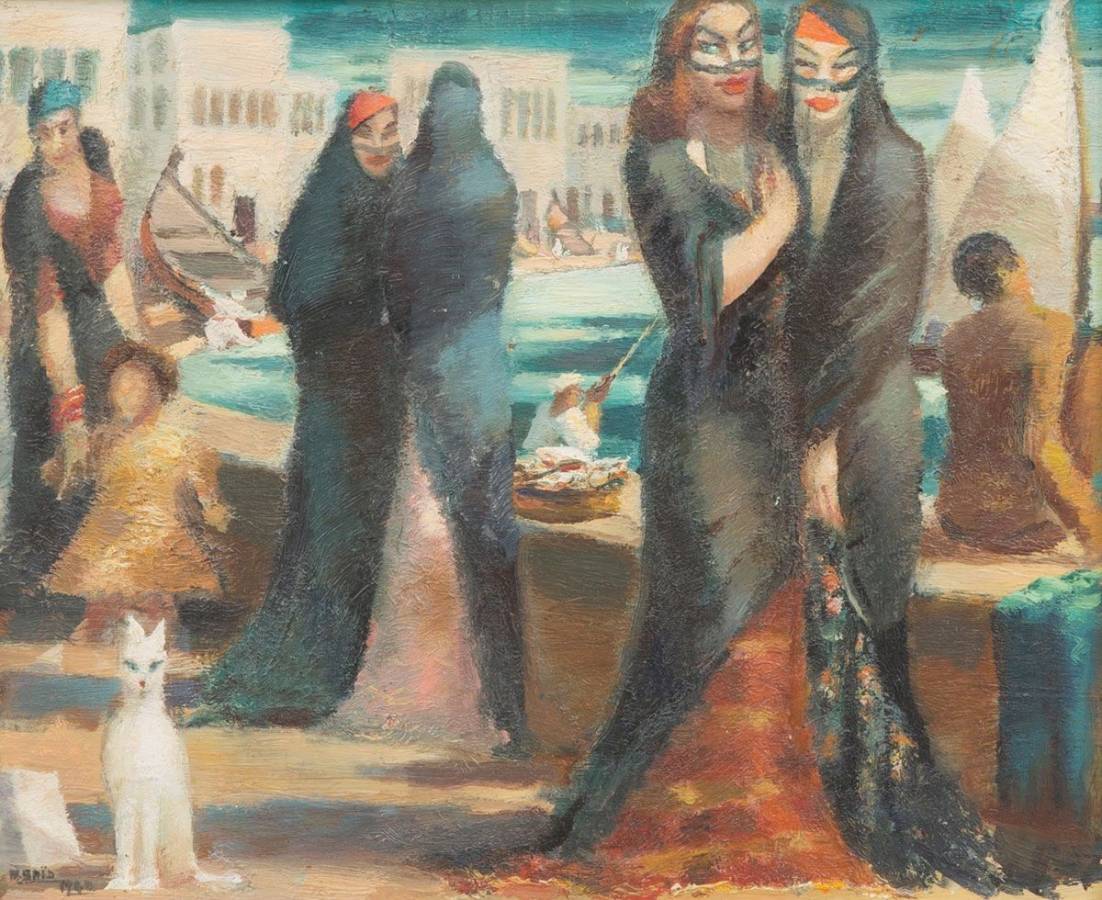
Mahmoud Said, Le Chat Blanc (The White Cat), 1948. Barjeel Art Foundation.
In a crowded day on Alexandria’s corniche, a dainty white cat sits poised, with a bustling scene unfolding around her. A line traces from the cat to the fishermen at work and sailboats in the distance, each in the same brilliant white hue. Her posture and perked ears are reminiscent of a regal ancient Egyptian cat, pictured here with wide eyes and lashes, whose colouring is similar to the makeup adorning the veiled women walking along the corniche, in a composition that is anchored towards this bright and beautiful cat.
In the works of modern artists, like Mahmoud Said and Samir Rafi, appears a choice to portray cats amidst crowded urban everyday scenes, but with evident traces of their ancient Egyptian features
Mahmoud Said (1897-1964) was an Alexandrian judge and modern artist. Born to an affluent family (his father was Egypt’s prime minister, and his niece was Queen Farida of Egypt), he was trained as a lawyer in Cairo and studied drawing at his own expense at the Academie Julian in Paris. Though he didn’t practice as a professional artist, his works are highly regarded as markers of Egypt’s early modernist movement.
His work is characterised by his painterly style and depictions of traditional Egyptian subjects, portraits and scenes. In his oeuvre of vibrant canvases, Said painted beautiful depictions of his beloved Alexandria, aristocratic portraits, enchanting Egyptian women, and scenic landscapes of his travels.
The Staring Cats
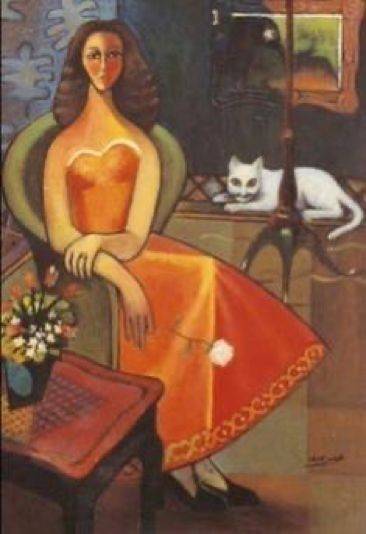
Hamed Ewais, A seated Woman, 1953.
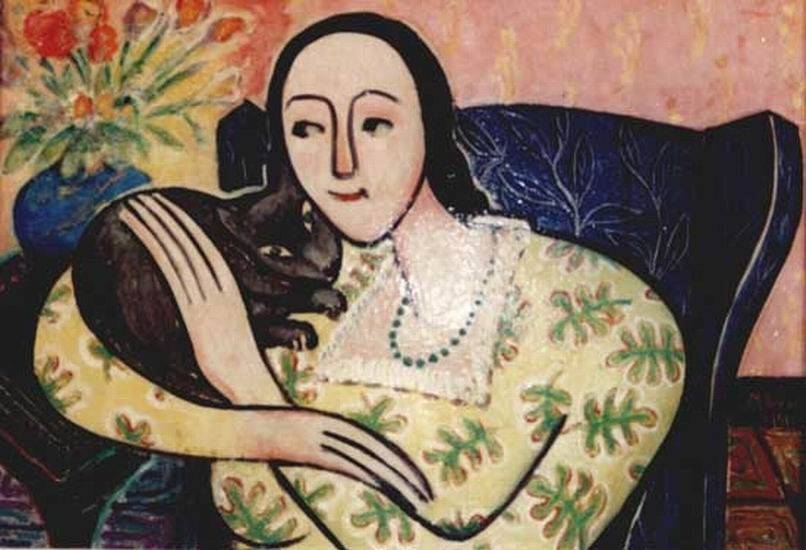
Hamed Ewais, Girl with a Cat, undated.
A white mustachioed cat lies behind their companion, and a black cat curls up in their companion’s embrace. Both at home, in a pretty interior, replete with decorative wallpaper, a vase of flowers on a wooden table, and a comfortable armchair in sight. These compositions are similar to impressionist paintings of cats.
The curious thing about both of these particular depictions is that whereas the girls seem to be looking in different directions - one with a vacant stare, the other looking lovingly at the cat in her arms - both cats stare dead ahead at the onlooker, eerily.
Mohamed Hamed Ewais (1919-2011) was one of Egypt’s leading Social Realist painters. Though he was employed as a metalworker, Ewais left to attend the School of Fine Arts in Cairo and pursue a career in art. He continued his studies at the Institute of Art Education in Cairo, trained by educator and critic Youssef el-Afifi. His work was strongly affected by the ideas of the Group of Modern Art, of which he was a founding member, along with his contemporaries Gazbia Sirry, Gamal el-Sagini, Zeinab Abdel Hamid, Salah Yousri, and Youssef Sida. Together they rejected Surrealism, which Ewais explained was “because it was essentially rebellion, or an art which did not aim at the consciousness of the people at large”.
Hamed Ewais painted vivid scenes of Egyptian life, depicting social and political ideologies in his work, in a distinctive and highly accessible visual language. He was influenced by Mahmoud Said, European modernists including Matisse and Picasso, and the Mexican Social Realists Diego Rivera and David Alfaro Siqueiros.
Mystical Qualities
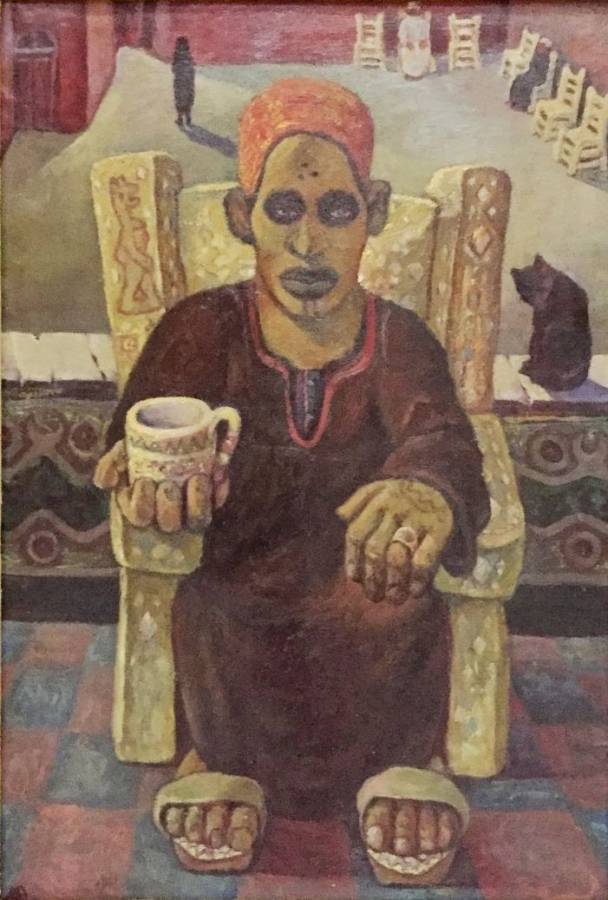
Abdel Hadi El Gazzar, The Fortune Teller, 1953.

Abdel Hadi El Gazzar, Man with a Cat, 1956
A small black cat lurks in the shadow of a seated fortune teller, looking over their shoulder towards the beholder. A furry black cat, painted in navy tones, sits by the side of their companion, the renowned art critic Aimé Azar, as they both look intently ahead. Sombre characters with stylised and exaggerated features are portrayed in deep earthy tones and reflect a serious and mystical quality.
Abdel Hadi El Gazzar (1925-1966) is considered one of the most important Egyptian artists. Born in Alexandria, his family moved to Cairo, settling in the neighbourhood of Sayeda Zainab when his father was appointed at Al-Azhar University as an Islamic scholar. El Gazzar initially studied medicine, but left the Faculty of Medicine to join the Higher School of Fine Arts in 1945, that he attended with his contemporaries including Samir Rafi and Hamed Nada, among others. Together they founded the Contemporary Art Group, of which Abdel Hadi El Gazzar was an active member. His work is characterised by traditional Egyptian and mystical religious themes drawn from the environment where he grew up.
He painted veiled political and social critiques employing an iconic language of his own, incorporating elements of Cairo’s urban landscape and symbols of popular religious beliefs. El Gazzar’s later works expressed themes around space, technology and dystopic portrayals of advancement, in a pointed but subtle reflection of his political criticisms. His short career spanned a diverse range of subject matter and had a profound impact on his contemporaries and successors alike.
A Domestic Setting
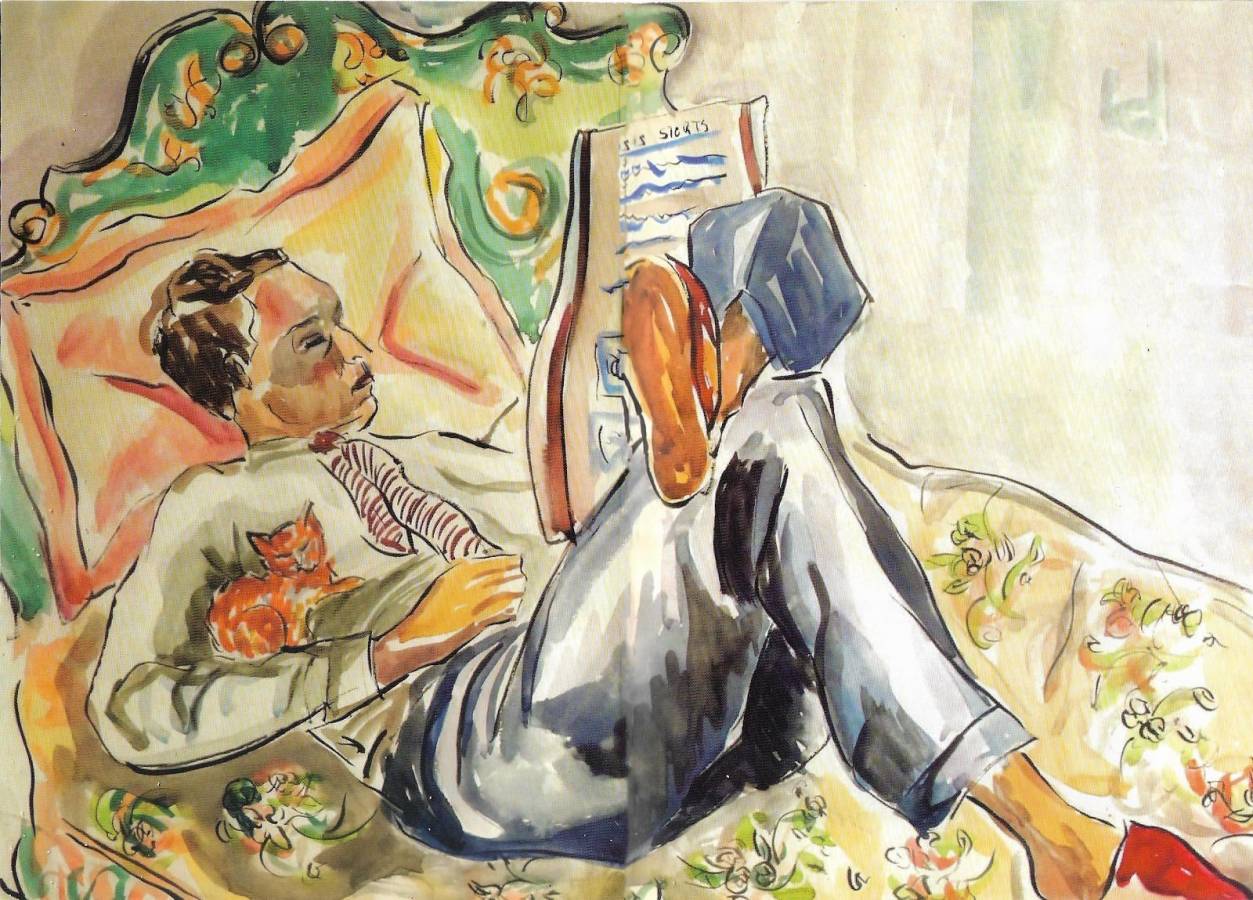
Inji Efflatoun, Relaxation (Al Istirkha’), circa 1950s.
A cute ginger kitten lies asleep, curled up in the arms of their companion, who, although fully dressed, is lying cross-legged in bed, reading a newspaper. In a bright and gestural composition, vivid watercolours depict this intimate domestic scene of relaxation in a style that is typical of the artist’s work during this period.
Inji Efflatoun (1924-1989) was a significant Egyptian painter, feminist and political activist. She is considered a pioneer of modern Egyptian art. Though she was born into an upper-class land-owning francophone family, her vibrant works and textured canvases portrayed the stark realities of the Egyptian working class, depicting peasants, labourers and craftsmen. She painted Egyptian women with an emphasis on their struggle and aspects of their daily lives.
Her early works are characterised by surrealist influences, which was a direct result of her training with the artist and filmmaker Kamel el-Tilmisani and the Art and Liberty Group. Efflatoun was politically engaged, and her activities resulted in her incarceration for four and a half years, throughout which she painted in prison. She continued to paint after her release, moving towards softer, brighter canvases that reflected her preoccupation with the study of light.
Against Geometric Patterns
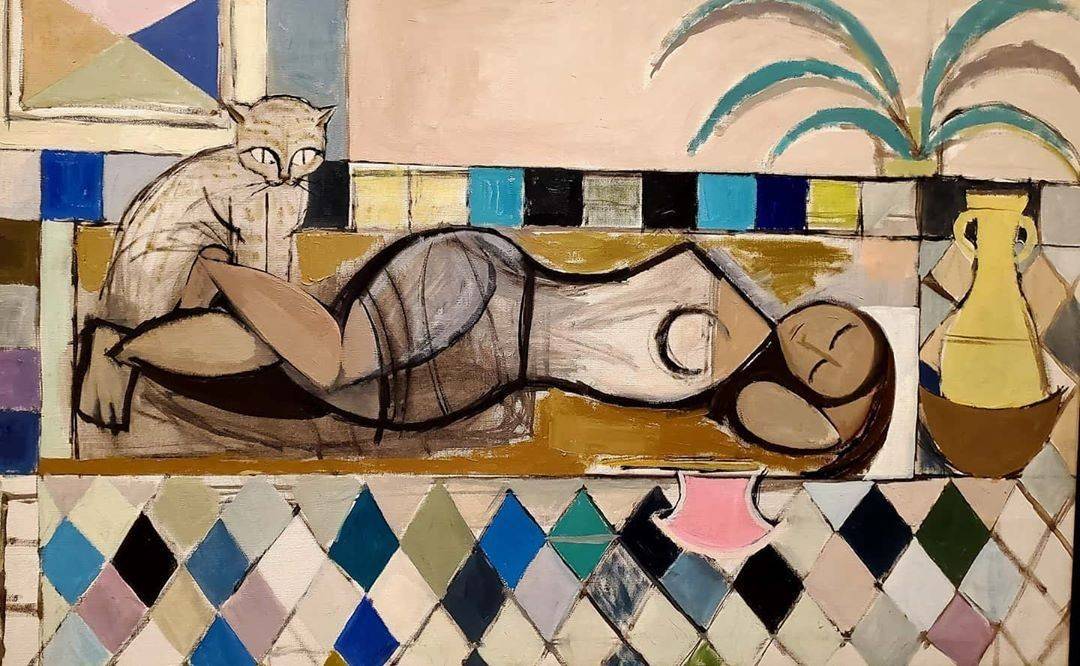
Jewad Selim, The Siesta, circa 1950s. Mathaf, Arab Museum of Modern Art.
On a warm bright day, a soft beige cat sits perched between their companion’s legs, as she peacefully naps in a colourful nook, under the shade of a palm tree. The cat is awake and looks directly ahead, sitting in guard. In this carefully composed canvas bright pastels and nude tones are framed in gestural outlines, depicting stylised forms against a backdrop of geometric patterns.
Jewad Selim (1919-1961) was an influential Iraqi painter and sculptor, widely considered as the founder of modern Iraqi art. Born in Ankara, where his father was stationed, he moved to Baghdad in 1921 where he lived with his family of artists. Though his mother wanted him to be a doctor, Jewad Selim always wanted to be an artist. He received a scholarship to study art in Paris and in Rome, but his studies were interrupted both times by war, forcing him to return to Baghdad. After the war, he studied at the Slade School in London and returned to Baghdad where he began to teach at the Institute of Fine Arts, appointed head of the Sculpture Department.
In 1951, he founded the Baghdad Modern Art Group (BMAG) and participated in a number of group exhibitions with the BMAG and Society of Iraqi Artists, as well as exhibiting internationally, in Beirut and Cities across the US. Selim is credited for being among the first Iraqi modern artists to draw on their heritage, developing a distinctly Iraqi style, what the BMAG referred to as ‘istilham a-turath’.
Women and Cats
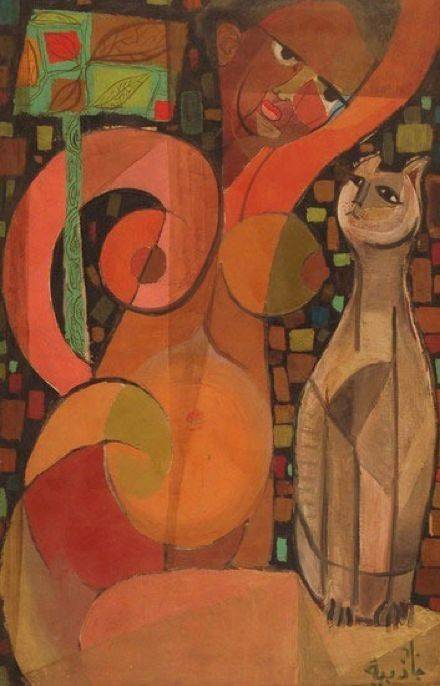
Gazbia Sirry, A Woman and a Cat, 1960
We can detect a connection between femininity and cats in the works of "A Woman and a Cat" and "Lady with Black Cat", which equally reflects the physical and the psychological status of the pet and its female companion
In a dreamlike depiction, a graceful gray cat looks upwards, neck extended, towards their companion, a similarly elongated nude figure, who appears to be stretching off the canvas. Vibrant colours, abstract shapes and soft brushstrokes express the magnificence of the female form in Sirry’s signature style.
Gazbia Sirry (b.1925) is a celebrated Egyptian artist who is part of a group of women artists who were prominent in the 1950s, in Nasser-era Egypt. Her work responded to various artistic, social and political shifts. She studied at the Higher Institute for Art Education for Women Teachers (currently the Faculty of Art Education in Helwan University) where she earned scholarships to pursue further studies with Marcel Gromaire in Paris, at the Egyptian Academy in Rome and at the Slade School in London.
In her earlier works, during the 1950s and 60s, Sirry adopted methods from Pharaonic sepulchral paintings, as well as Coptic traditional paintings, and lithographic techniques, in the way that she depicted figures, outlining forms in black. Gazbia Sirry continues to practice art today, in the Zamalek neighbourhood in Cairo where she lives and works.
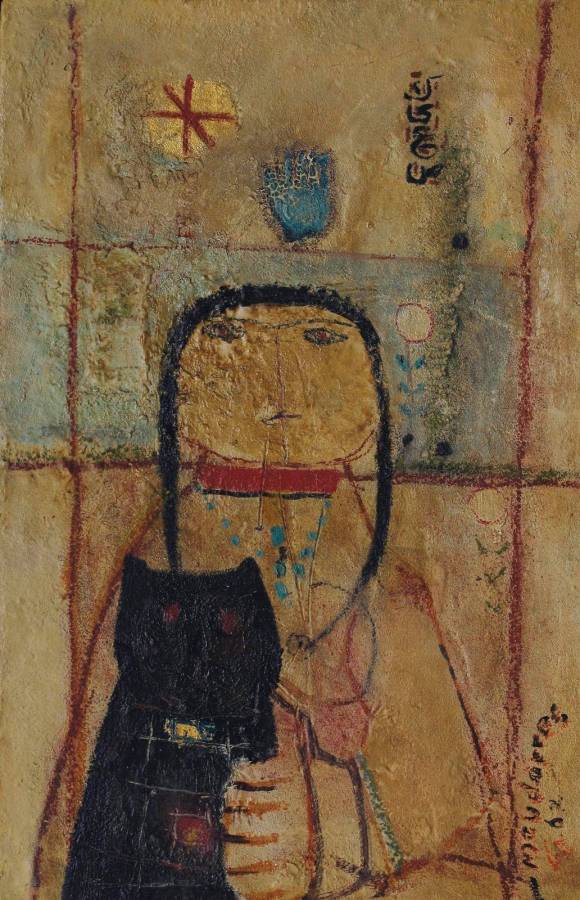
Fateh Moudarres, Lady with Black Cat, 1962
A sullen woman stares seriously ahead, as she sits holding her big black cat. The cat stares out with bright red eyes, scored in textures and shapes that are echoed in the abstract backdrop. This square shaped lady and her black cat appear in Moudaress’ idiosyncratic figurative style.
Fateh al-Moudarres (1922-1999) was a Syrian painter considered a leading artist of Syria’s modern and surrealist movements. He studied at the Accademia di Belle Arti in Rome, and the Ecole des Beaux-Arts in Paris and trained with his mentor, neoclassicist painter Wahbi Al-Hariri in Syria. Moudarress was appointed at the Faculty of Fine Arts and the University of Damascus upon his return. His work was politically engaged and addressed regional political events, the most notable of which is the Lebanese civil war.
The Egyptian Cat
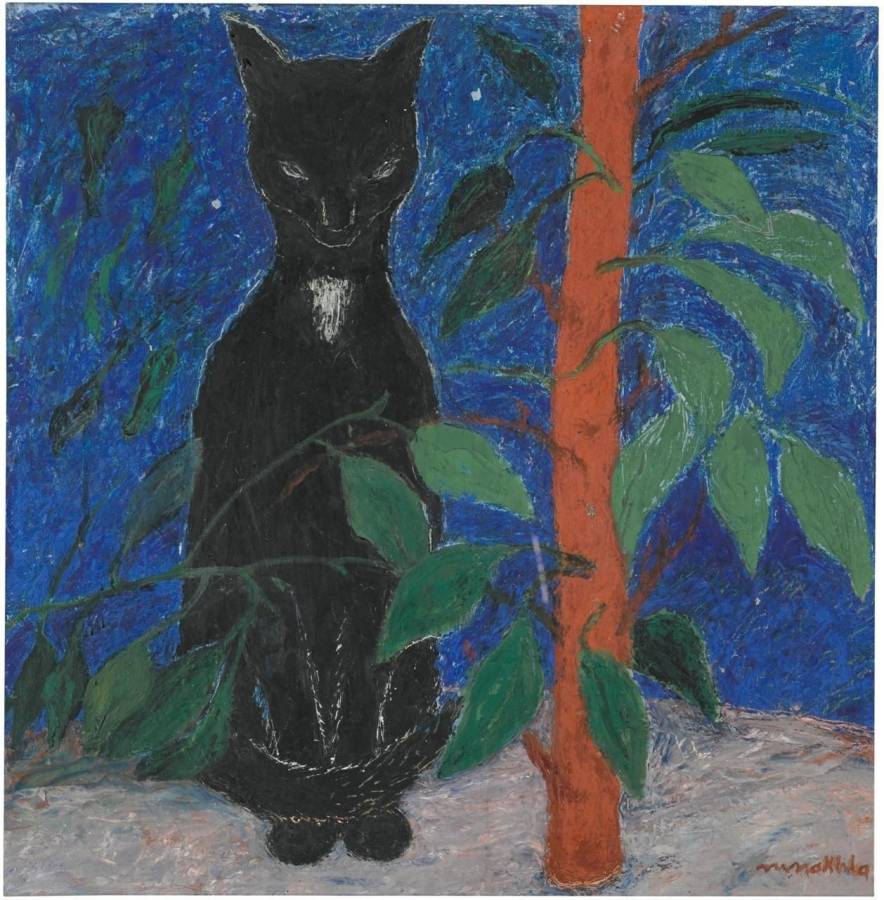
Marguerite Nakhla, Le Chat Egyptien (The Egyptian Cat), 1965
A large black cat sits wrapped in their tail, under the shade of a tree. Painted in a deep black with eyes shaded gray in a blank stare, in a backdrop of blue reminiscent of lapis lazuli, this Egyptian cat summons images of its ancient predecessors, depicted in the artist’s typical technique.
Marguerite Nakhla (1908-1977) was an Egyptian artist considered one of the pioneers of the Egyptian modernist movement. She was trained at the College of Fine Arts in Cairo and the Ecole Nationale des Beaux-Arts in Paris. Nakhla was both a painter and an educator, and lived in Alexandria, Paris, Cairo and Port Said. She described her work as “folk art” and produced compelling portrayals of various aspects of Egyptian life.
Men and Cats
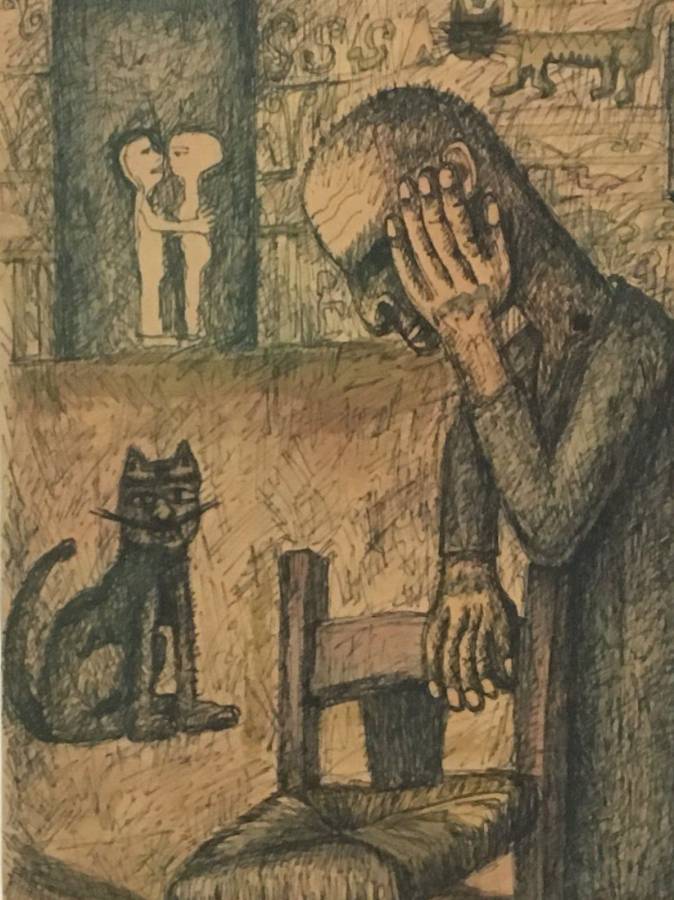
Hamed Nada, Man and Cat, 1947.
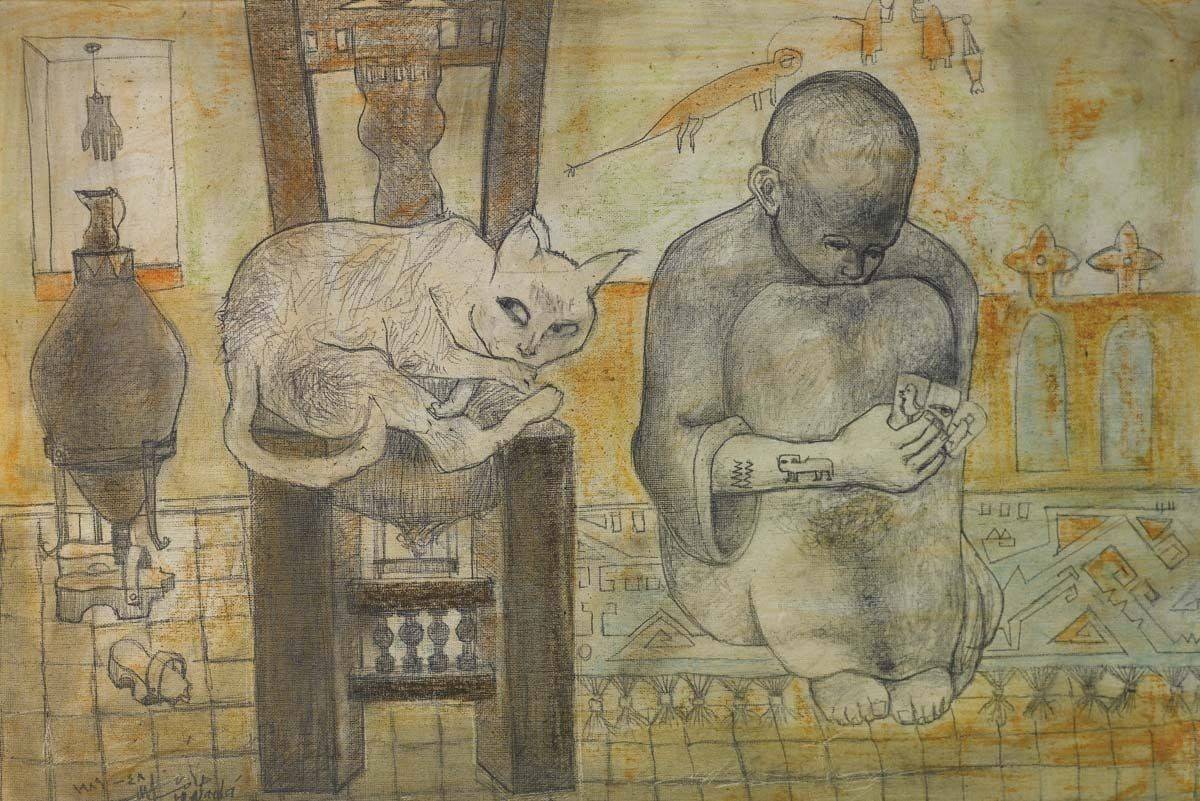
Hamed Nada, Fortune Teller and the Cat, 1989. Barjeel Art Foundation.
In a wide washed out room, on a big stretched chair, sits a hunched white cat, looking upwards out of the corner of their eyes. Their companion sits behind them on the floor looking towards the ground. A moustachioed black cat sitting on the floor looks directly ahead, as if mid sentence. Their companion stands hunched over a chair, hand to his head. Both of these cats are depicted in a surreal visual language that is typical of Hamed Nada’s work.
Hamed Nada (1924-1990) was one of the first modern Egyptian artists. He trained with artist and educator Huseein Youssef Amin, attended the School of Fine Arts in Cairo with the painters Ahmed Sabry and Youssef Kamel, and studied mural painting at the Royal Academy of Fine Arts of San Fernando in Madrid. Nada was an active member of the Contemporary Art Group along with Abdel Hadi El Gazzar, Maher Raif, and Kamal Youssef, among others. His work reflected elements of his upbringing in the neighborhood of Sayyida Zeinab in Cairo and depicted aspects of Egyptian daily life incorporating political, social, and superstitious symbolism in his signature stylised figuration.
Raseef22 is a not for profit entity. Our focus is on quality journalism. Every contribution to the NasRaseef membership goes directly towards journalism production. We stand independent, not accepting corporate sponsorships, sponsored content or political funding.
Support our mission to keep Raseef22 available to all readers by clicking here!
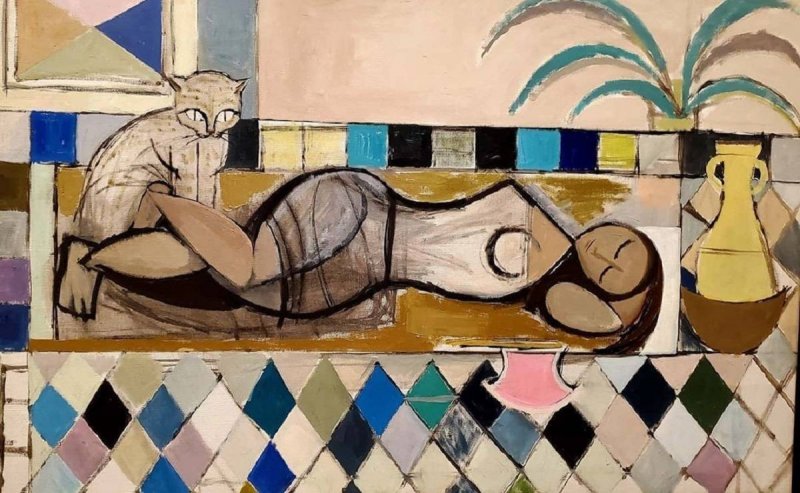
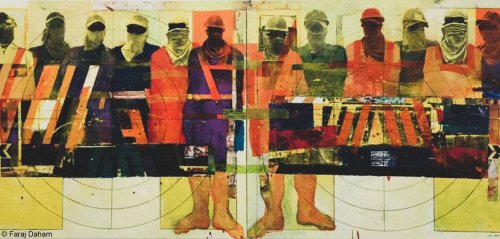
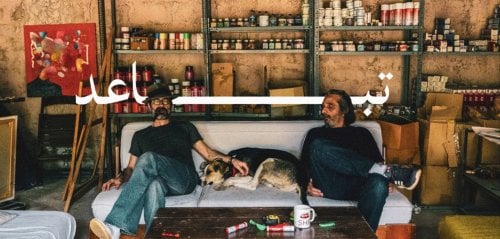
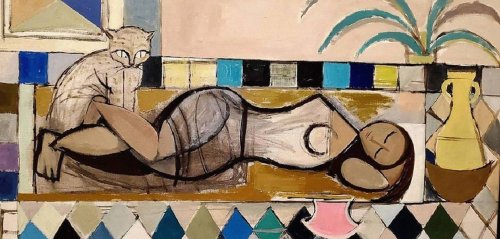




Join the Conversation
جيسيكا ملو فالنتاين -
1 day agoجميل جدا أن تقدر كل المشاعر لأنها جميعا مهمة. شكرا على هذا المقال المشبع بالعواطف. احببت جدا خط...
Tayma Shrit -
3 days agoمدينتي التي فارقتها منذ أكثر من 10 سنين، مختلفة وغريبة جداً عمّا كانت سابقاً، للأسف.
Anonymous user -
3 days agoفوزي رياض الشاذلي: هل هناك موقع إلكتروني أو صحيفة أو مجلة في الدول العربية لا تتطرق فيها يوميا...
Anonymous user -
3 days agoاهم نتيجة للرد الايراني الذي أعلنه قبل ساعات قبل حدوثه ، والذي كان لاينوي فيه احداث أضرار...
Samah Al Jundi-Pfaff -
5 days agoأرسل لك بعضا من الألفة من مدينة ألمانية صغيرة... تابعي الكتابة ونشر الألفة
Samah Al Jundi-Pfaff -
5 days agoاللاذقية وأسرارها وقصصها .... هل من مزيد؟ بالانتظار